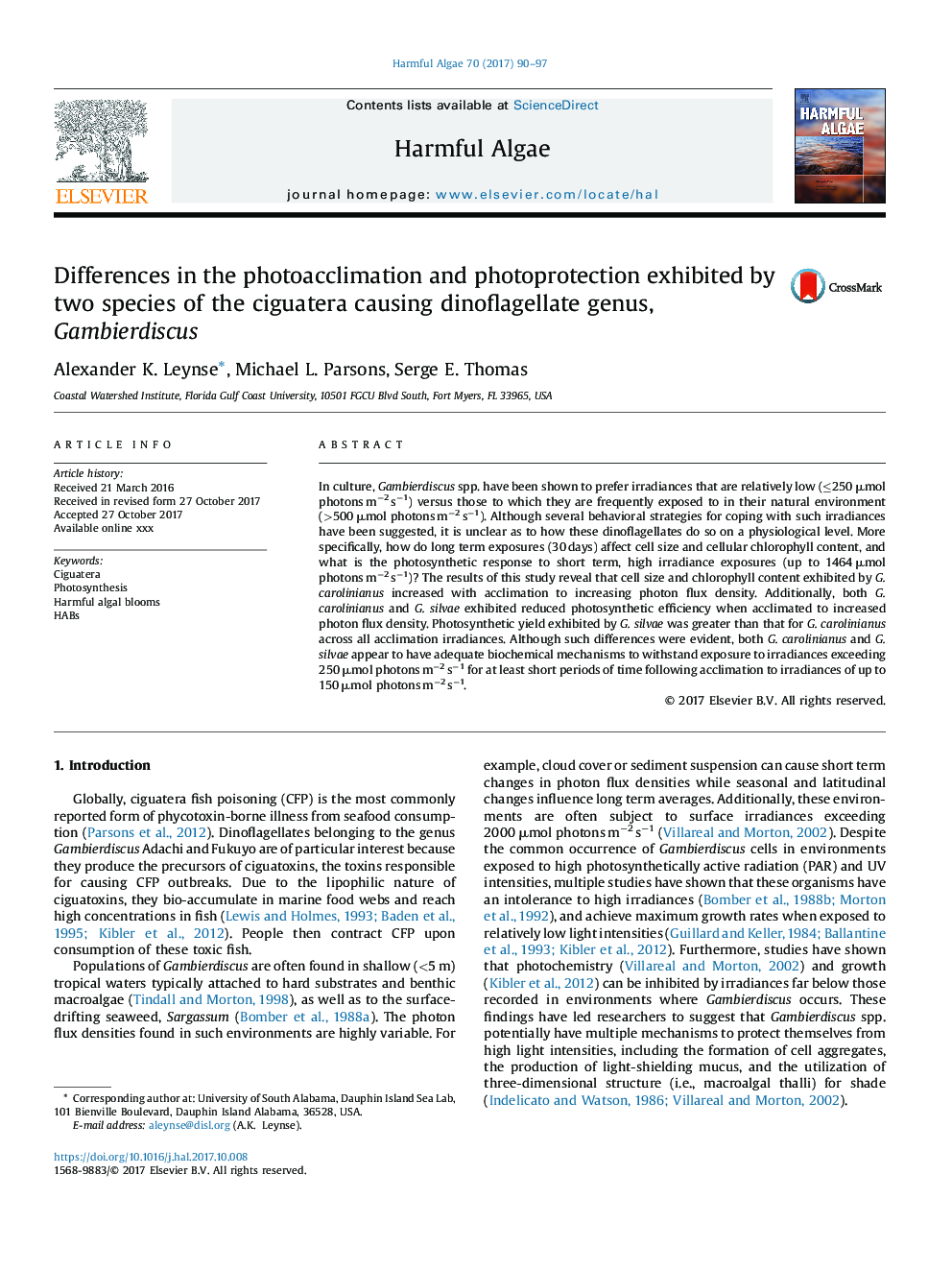| Article ID | Journal | Published Year | Pages | File Type |
|---|---|---|---|---|
| 8885738 | Harmful Algae | 2017 | 8 Pages |
Abstract
In culture, Gambierdiscus spp. have been shown to prefer irradiances that are relatively low (â¤250 μmol photons mâ2 sâ1) versus those to which they are frequently exposed to in their natural environment (>500 μmol photons mâ2 sâ1). Although several behavioral strategies for coping with such irradiances have been suggested, it is unclear as to how these dinoflagellates do so on a physiological level. More specifically, how do long term exposures (30 days) affect cell size and cellular chlorophyll content, and what is the photosynthetic response to short term, high irradiance exposures (up to 1464 μmol photons mâ2 sâ1)? The results of this study reveal that cell size and chlorophyll content exhibited by G. carolinianus increased with acclimation to increasing photon flux density. Additionally, both G. carolinianus and G. silvae exhibited reduced photosynthetic efficiency when acclimated to increased photon flux density. Photosynthetic yield exhibited by G. silvae was greater than that for G. carolinianus across all acclimation irradiances. Although such differences were evident, both G. carolinianus and G. silvae appear to have adequate biochemical mechanisms to withstand exposure to irradiances exceeding 250 μmol photons mâ2 sâ1 for at least short periods of time following acclimation to irradiances of up to 150 μmol photons mâ2 sâ1.
Related Topics
Life Sciences
Agricultural and Biological Sciences
Aquatic Science
Authors
Alexander K. Leynse, Michael L. Parsons, Serge E. Thomas,
